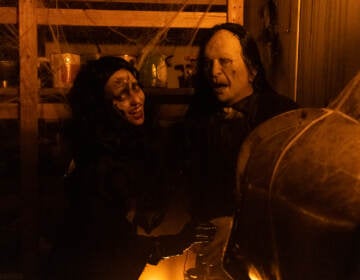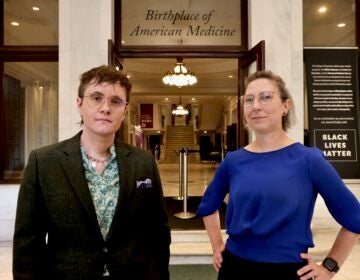Still popular after 125 years, Dracula proves to be undead in Philadelphia
The Mutter Museum and the Rosenbach Library and Museum collaborate on the anniversary of Bram Stoker’s undead creation.
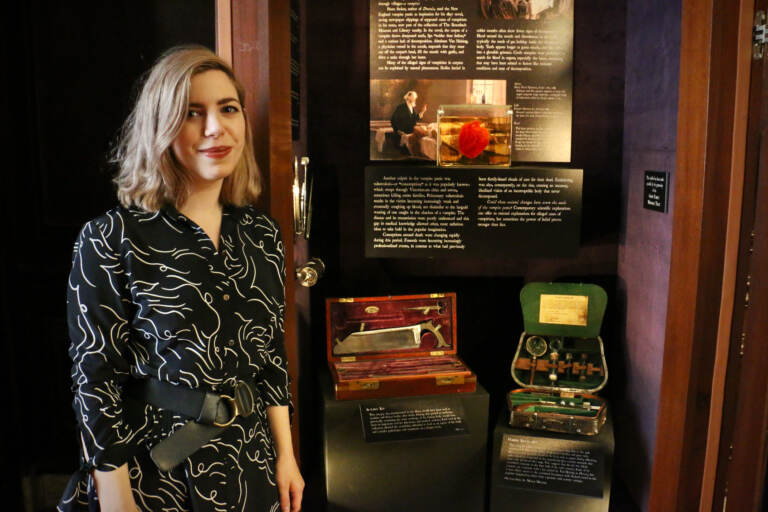
Meredith Sellers is one of the curators of the Mütter Museum's Dracula exhibit. (Emma Lee/WHYY)
The Mutter Museum and the Rosenbach Library and Museum in Philadelphia are marking the 125th anniversary of the publication of “Dracula,” the novel by Bram Stoker whose grip on the throat of pop culture has never abated.
Dracula was unleashed on the world in 1897 by way of Whitby, a small seashore town on the northeastern coast of England where Bram Stoker once stayed.
The sight of moonlight glowing on the ruins of a stone gothic abbey perched on a sea cliff inspired the author to make Whitby the landing for Count Dracula’s westward expansion from Transylvania.
A Philadelphia landmark may also have played a small role in the creation of Dracula.
The Rosenbach has about 100 pages of notes Stoker wrote while researching and developing his infamous character. Some of those notes are written on stationary from Philadelphia’s Stratford Hotel at Broad and Walnut streets, now known as the Bellevue Hotel.
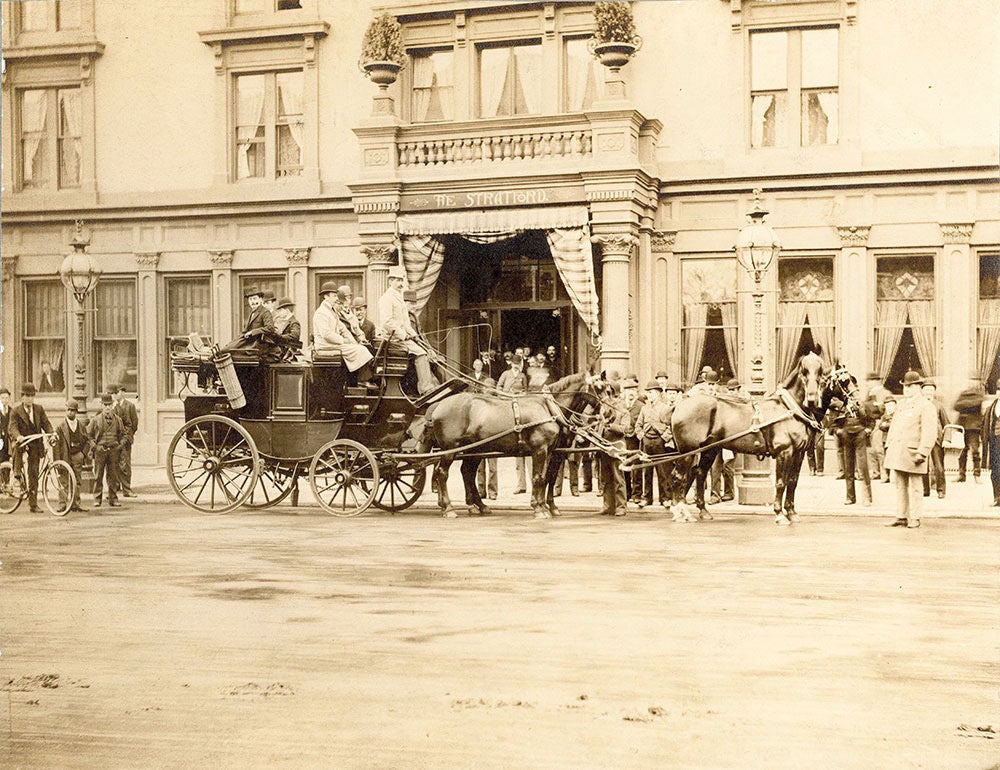
Stoker used hotel stationery to work out some ideas about Chapter 26, when Mina Harker and Van Helsing travel to Transylvania in search of the missing Jonathan Harker.
Edward Pettit, Rosenbach’s senior manager of public programs, said Stoker may have written those notes while traveling through Philadelphia, managing a U.S. performance tour of London’s Lyceum Theater.
“That’s his day job,” Pettit said. “We don’t know whether he wrote that in Philadelphia or he did what everybody does: You take the hotel stationery because it’s convenient. Especially if you’re a writer. You can never have too much paper.”
Those notes are the centerpiece of the Rosenbach’s programming around the 125th anniversary of Dracula, along with a number of first editions and rare books, including a first of Dracula in Gaelic (Stoker was Irish).
The Rosenbach has a long history with Dracula, at one time staging an annual Dracula Festival in the streets around Rittenhouse Square.
During the pandemic, the library’s interest in Dracula went global.
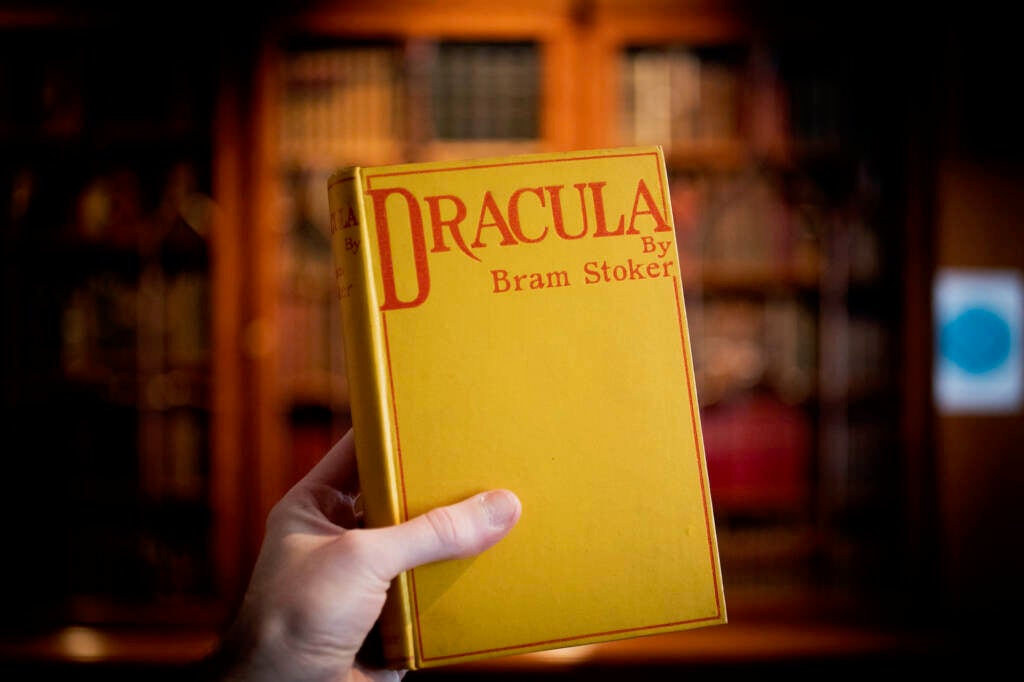
In May 2020, the Rosenbach launched “Sundays with Dracula,” a series of live-streaming talks for 27 weeks, discussing one chapter from the book per week. It was one of the first virtual programs the Rosenbach offered after the pandemic shut down all in-person programs.
“It was spur of the moment. We had two weeks to promote it. I thought, ‘It would be nice if a dozen people show up,’” said Pettit. “We averaged a hundred people watching live per episode. The whole run was over 2,000 watching it. I was surprised you could find that many people without trying. There was no real campaign for it.”
The 125th anniversary programming is a return to in-person events, including a dusk-to-dawn marathon reading of the novel at Trinity Church starting this Friday night into Saturday morning, and a theatrical tour of the library and its holdings featuring actors in character.
The Rosenbach is collaborating with the nearby Mutter Museum to offer a public course about the hard science behind the supernatural novel. “The Gothic Science of Dracula: A Literary Seminar Series” is scheduled for next February and March.
Dracula, the character, may be ancient, but Bram Stoker filled his story with modern technology circa the 1890s. The epistolary novel is written as a series of messages sent between the main characters written on typewriters, a relatively new invention, and spoken into dictaphones. There is talk about medical blood transfusions. Some of the action hinges on the speed of a locomotive.
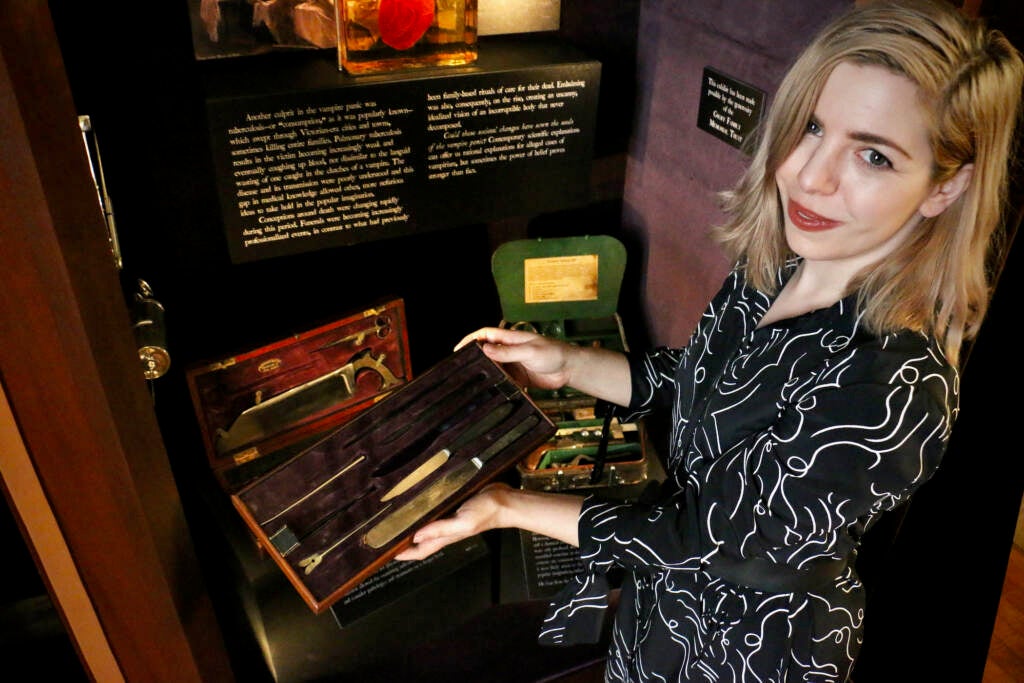
“These are signifiers that this was really high-tech for the time,” said Meredith Sellers, a co-curator of the Mutter Museum’s exhibition “Dracula and the Incorruptible Body.” “Even though now it sounds really silly to us to think about somebody recording an audio diary in a phonograph.”
The Mutter exhibition is a small, single-case display of 19th-century medical objects related to vampirism and in particular the New England Vampire Panic. Around 1854, people in rural parts of Rhode Island and Vermont became convinced they were plagued by vampires, exhuming corpses to behead them, remove their hearts, and feed them to suspected vampire victims.
The communities were likely plagued by tuberculosis, an infection with symptoms that can appear vampire-like. Doctors were able to diagnose tuberculosis at that time, but there was no cure. There was very little anyone could do for a tubercular patient but watch them die.
Sellers has sympathy for those who believed in vampires.
“You have another person who’s saying to you, ‘What if it’s not tuberculosis? What if somebody in the community is a vampire?’” she said. “If somebody’s giving you a solution, and medicine and science is not giving you a solution, you might take that chance. You might do the thing that seems kind of horrifying if it has even the slightest chance of saving somebody you love.”
The Mutter exhibition features 19th century autopsy tools, which might be used to extract a corpse’s heart, and a supposed Vampire Killing Kit, featuring a pistol, “silver” bullets (actually made of pewter), vials of mysterious fluids, and an ivory crucifix shaped to the point of a dagger at the bottom.
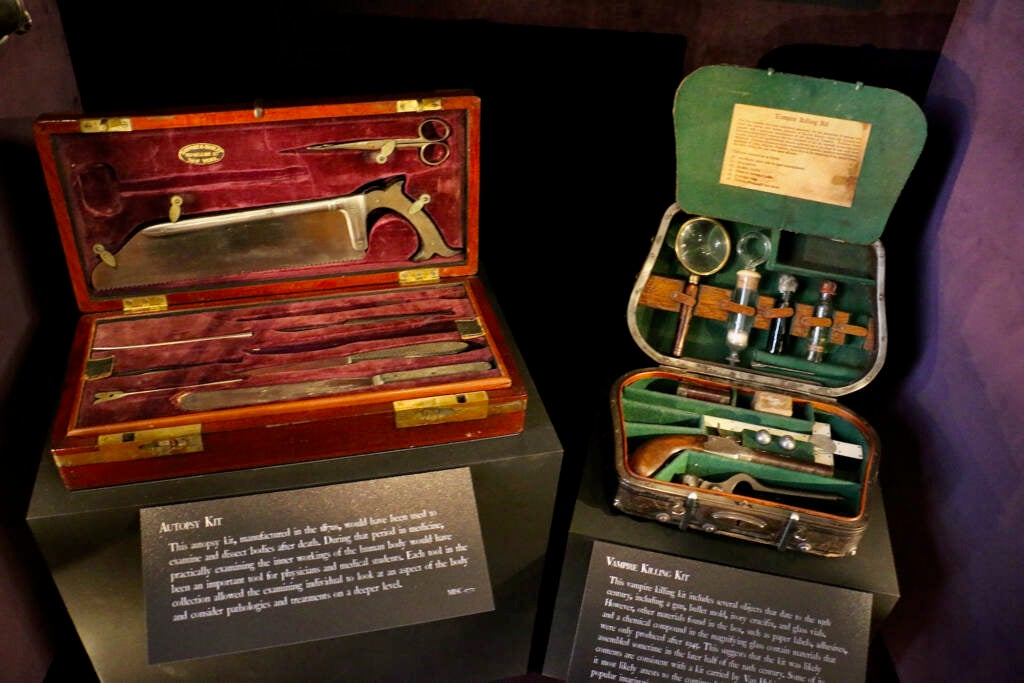
The kit is on loan from the Mercer Museum in Doylestown, Pa., and is likely a hoax. Sellers points out that some of the items date to the mid-19th century, but other aspects of the kit suggest it was assembled in the 20th century.
“Probably sometime in the latter half of the 20th century somebody had a bunch of antiques, pulled them together, and tried to pass it off as this vampire killing kit,” she said. “But it does have some of the things that Dr. Van Helsing, the character in Dracula, would have had in his kit.”
The display also has an actual human heart, used for medical training. It is dyed vermillion red to better illuminate its veins and vessels, and submerged in alcohol for preservation. It comes from the Mutter’s vast collection of medical specimens, many of which are dead things floating in jars.
“It’s actually one of my favorite things in the collection because it’s just so lush and beautiful,” Sellers said. “Many things in the collection are white or brown or yellow. The Vermillion Heart is this bright, beautiful object.”

For its Year of Dracula, the Mutter Museum will be staging a series of events related to vampirism, including the screening of the silent film “Haxan: Witchcraft Through the Ages,” a 1922 Swedish horror documentary about demonology and the persecution of women as witches in the Middle Ages. The screening this Sunday will feature a live score composed and performed by the local ensemble Not So Silent Cinema.
WHYY is your source for fact-based, in-depth journalism and information. As a nonprofit organization, we rely on financial support from readers like you. Please give today.



